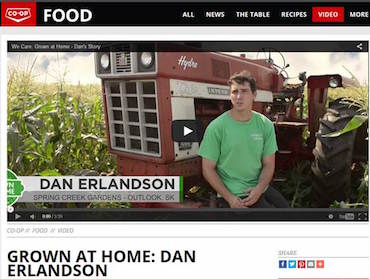From making a claim to sharing your story
The next time you go grocery shopping pretend, you don't have a favourite peanut butter or preferred cereal.
Try to find the products that meet your needs using only the information available in the andore and your mobile phone. That shouldn't limit your ability to get the information required to make your decision. Or does it?
Is the mass amount of information available to you online and in-store too much information for you to make a simple cereal decision? With all of that data at your fingertips, why would this decision be difficult?
Too much information is confusing! That's why we as consumers take mental shortcuts when making decisions as simple as which cereal we buy. We look for signals that help us align products with what we are looking for. If my goal is to purchase a "healthy" cereal, doesn’t it make sense for me to pick up the cereal with whole grains, or high fibre, or low sugar, or added protein or gluten free?
With all of the marketing claims we see today, it can be confusing for shoppers to know the facts. What's good for me? What's good for my family? What's certified? What do these certifications mean?
We as marketers need to find ways to make our cereal stand out or at the very least spike some interest in the consumer's mind so they want to learn more.
One of the struggles in doing this is that many claims are ambiguous or hard to measure.
Take "local" for example. What does local mean? Is it the chicken 20 km from the store or is western Canadian local? There are many ways to define local and for each individual this definition might change.
Even claims that are defined through certifications can still be difficult for consumers to understand. If a claim is certified there are usually specific requirements for the product to be able to carry the certified mark. How do you in a few seconds get consumers to care about your claim and then want to understand it?
I suggest one way to accomplish this goal is to share your story.
Sharing your story and making the consumer interested and emotionally attached to your message is where the opportunity is. When you are emotionally connected or genuinely interested in a topic you are more likely to want to learn more about it–that is when the details supporting your claim come into place.
Take “Local” – everyday across Western Canada shoppers purchase local produce from their local Co-op. The obstacle in messaging is how local is defined. While we do have a third party rating system that measures local for our customers, this is not the first message we share because at first glance that is too much information. So what did we do? We told our story.
Take our new Co-op Gold PURE Chocolate - this product is gluten-free, fairtrade-certified, organic-certified and made with environmentally friendly packaging. That is a long list of product claims and attributes. So how did we engage the shopper with this product? We told our story.
Without spiking their interest, consumers do not want to read the 50 page documentation on what your claim or certification is about – that’s too much information! When done right, sharing a story can create an emotional connection with your reader and engage them in your message so they want to learn more.





